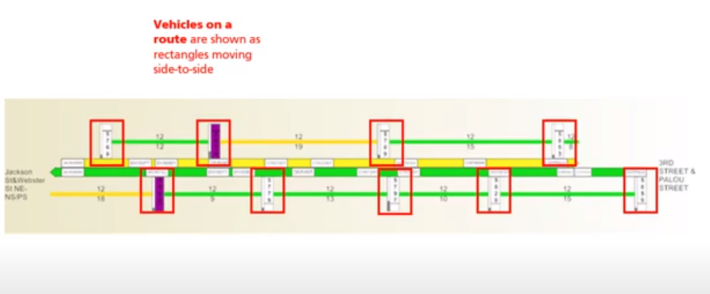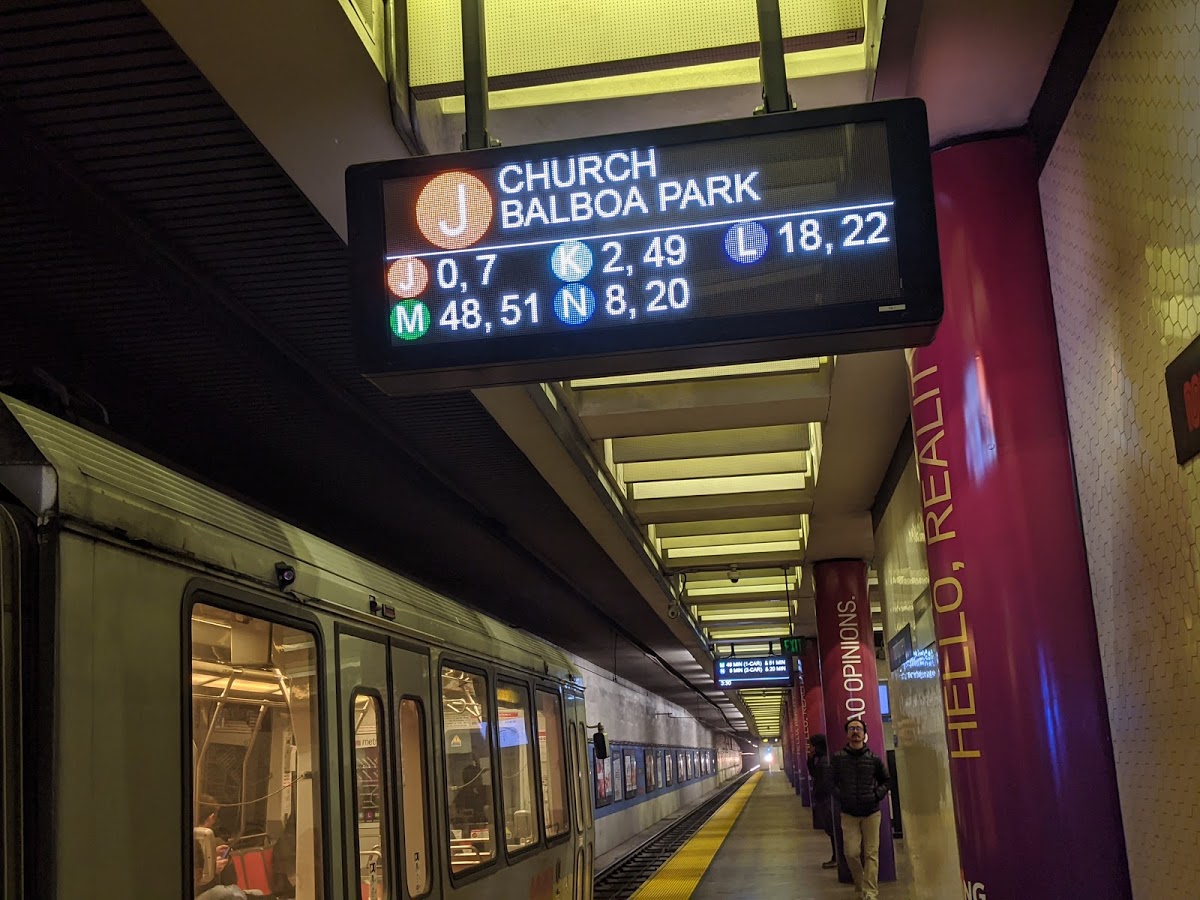Note: GJEL Accident Attorneys regularly sponsors coverage on Streetsblog San Francisco and Streetsblog California. Unless noted in the story, GJEL Accident Attorneys is not consulted for the content or editorial direction of the sponsored content.
When someone goes to catch a bus or train, they probably don't care if it's on schedule per se--they just don't want to end up waiting longer than they have to at the stop. And as anyone who has waited for forty minutes for an N Judah (or any train or bus) only to have three arrive nose-to-tail can attest, this basic fact seems lost on Muni.
Until now. SFMTA director Jeffrey Tumlin explained in a tweet that Muni is making the switch away from fixed schedules to making buses arrive at reliably fixed intervals, an approach known in transit parlance as "headway management":
Transit nerds: While the COVID tragedy has devastated @sfmta_muni service, our buses are more reliable than ever. Partly, it's 20-50% time savings from no congestion. It's also "headway management." Our internal training explainer: https://t.co/0jRK2RnnQT
— Jeffrey Tumlin 🏳️🌈 (@jeffreytumlin) May 27, 2020
Tumlin mentioned this move briefly in a Q&A last month. The idea, he explained, was that on popular bus lines managers would stop worrying about whether, for example, the 14 Mission bus Muni has designated to arrive at 16th and Mission at 5:15 p.m. actually arrives at 5:15 p.m. Instead, they'd worry about when the last bus stopped at 16th and Mission, and speed up or slow down the next buses in the queue to avoid bunching them together. That way riders can show up knowing that they'll never be waiting more than, say, ten minutes.
"It is unfortunate that it's taken a global pandemic to get Muni to take a chance on headway management, but I absolutely applaud them for being nimble enough to give it a try," wrote the San Francisco Transit Riders' Cat Carter in an email to Streetsblog. "Riders have been asking about it for years, because Muni schedules seem so far removed from reality."

"Headway adherence can be a better way to run and measure service on frequent lines, and reduce bunching and overcrowding. Keeping adequate space on transit for physical distancing is especially important right now," wrote Livable Cities Tom Radulovich.
As transportation expert Dennis Lytton explained to Streetsblog, going to a headway system required software advancements that can let managers better track and predict bus arrival times, but the technology has matured "...in the last several years." The problem, he explained, was more a lag in getting managers to catch up with the concept. "And this crisis was an opportunity to ditch old paradigms."
So we had to abandon bus schedules. Instead, we've activated existing tech and asked bus operators to space themselves evenly between the bus in front and behind. This is good for passenger spacing, passenger convenience, and operator health.
— Jeffrey Tumlin 🏳️🌈 (@jeffreytumlin) May 27, 2020
Carter hopes headway management will stick around as the new paradigm long after the pandemic is over. "I hope we can rebuild transit service better than ever, for a better future for all San Franciscans."
As Tumlin suggests, transit nerds should be sure to check out the full video on how headway management works. Or check out this post from Swiftly.





